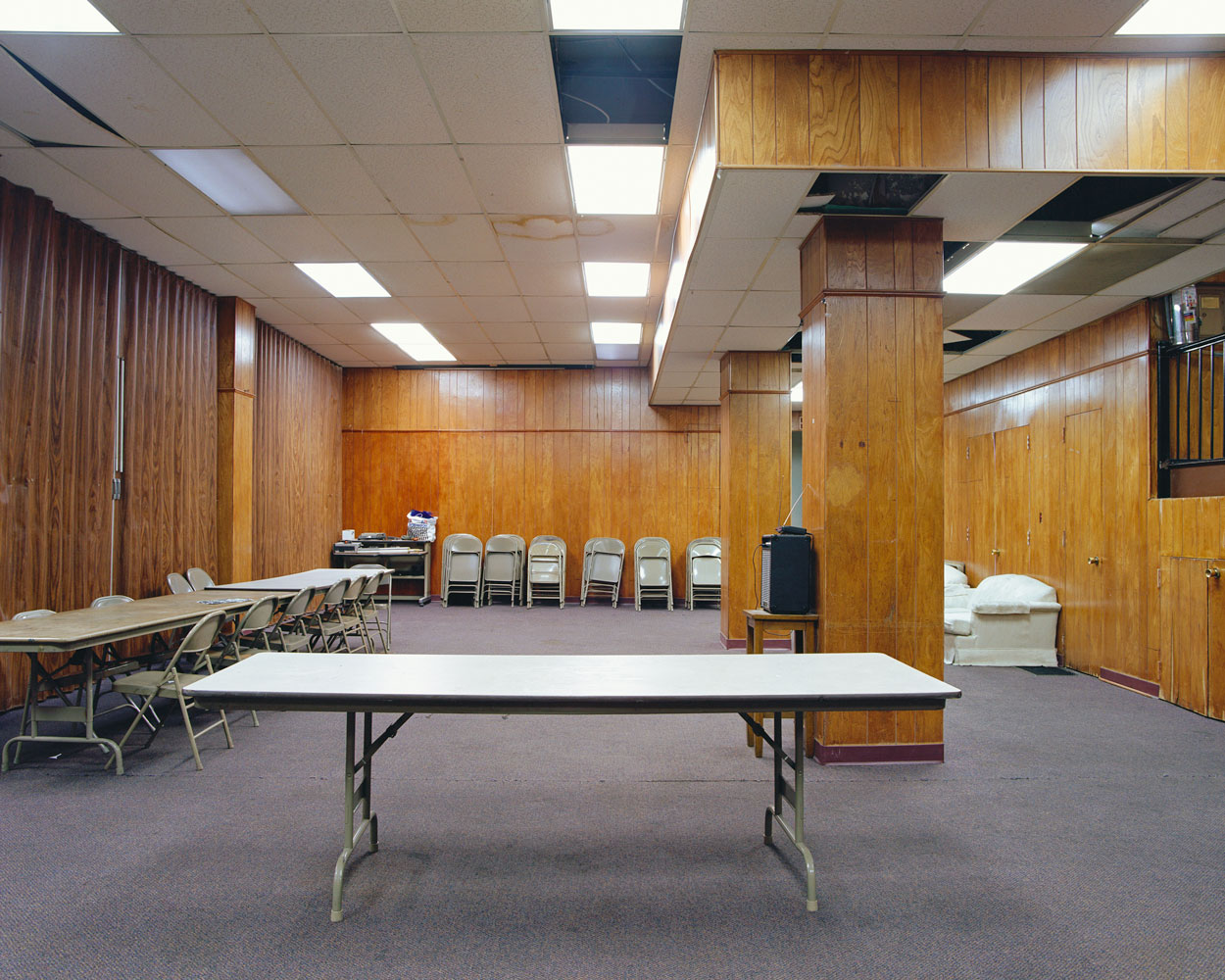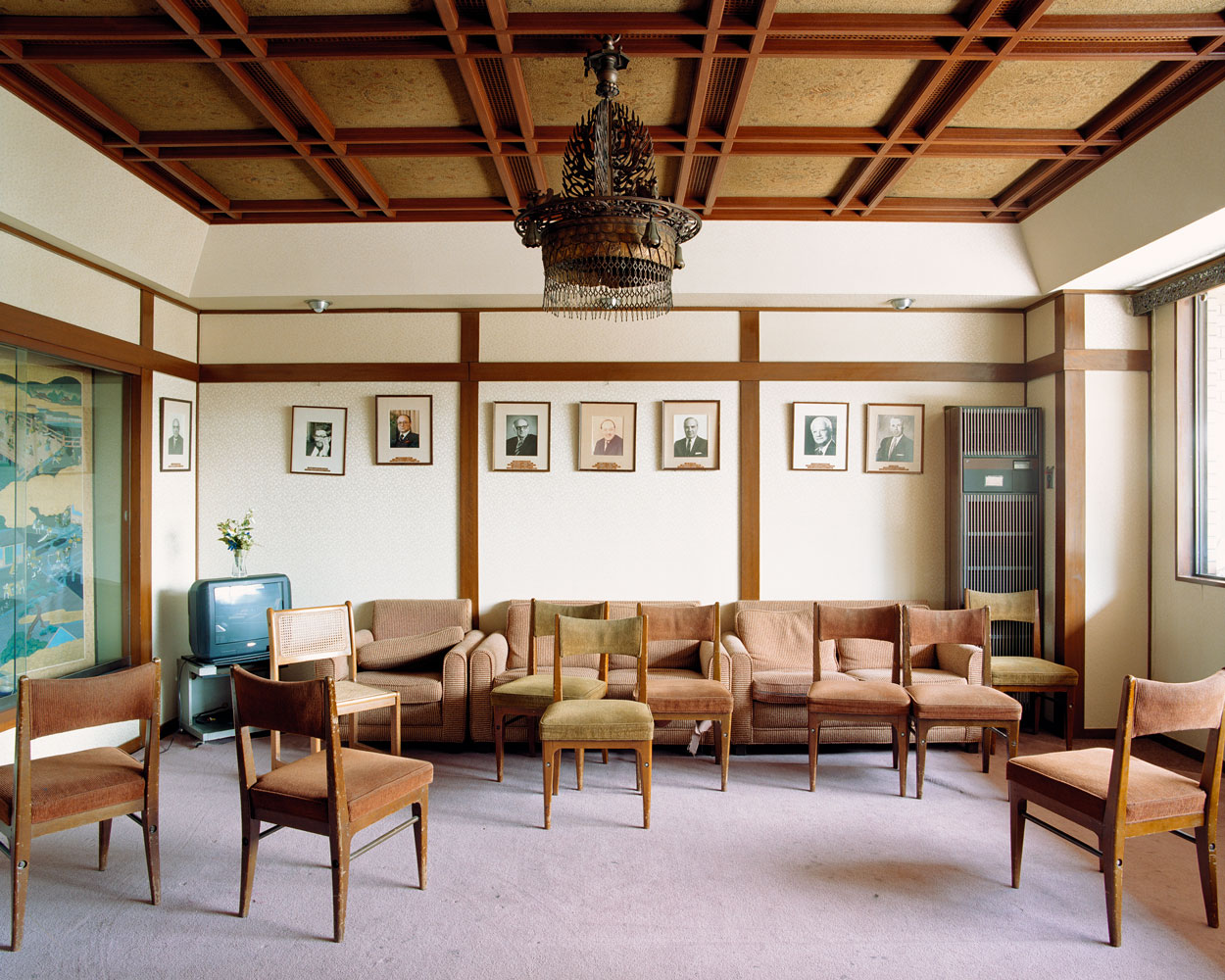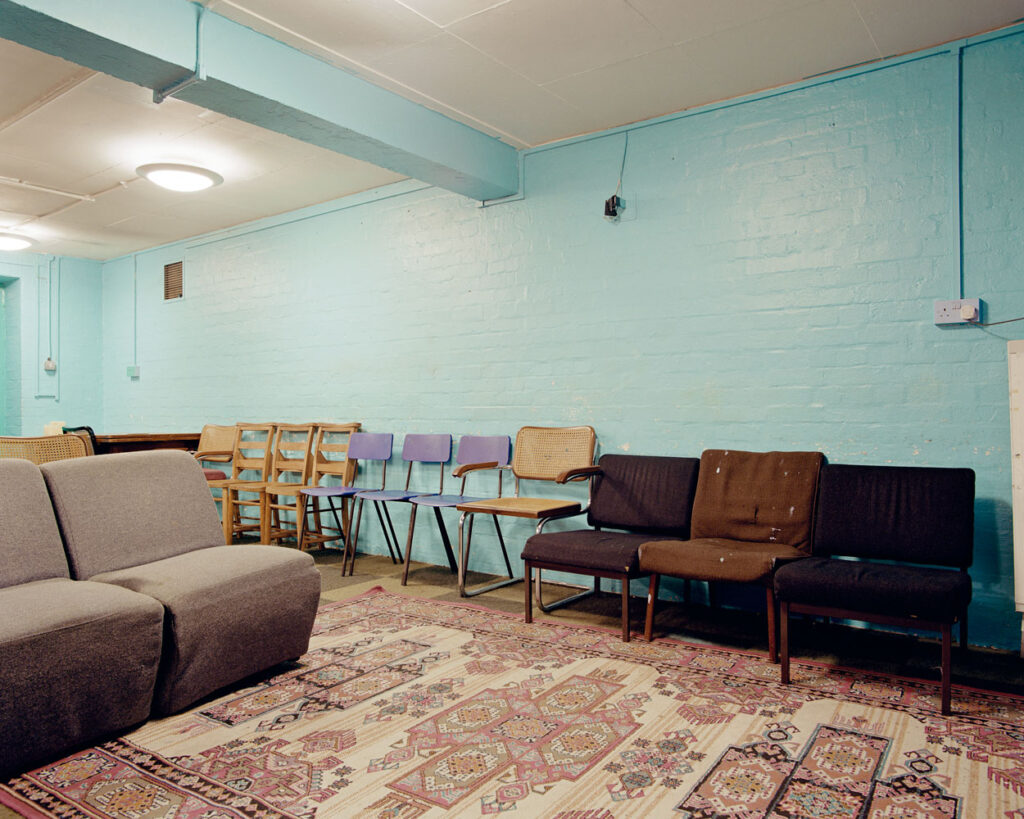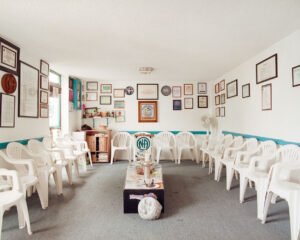

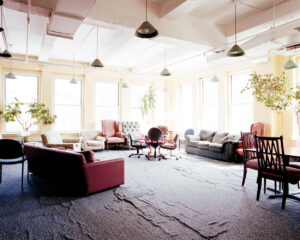
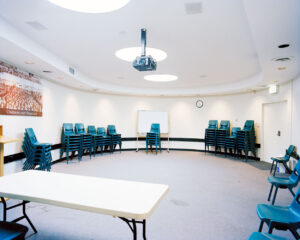







Community Service, by Tom Morton
Hope dances in sharp, painful places – on a knife’s edge, or on the point of a needle. To hope is a ritualistic act (think of crossing your fingers, or hanging a wish upon a star), and one that has its temples, although these are sometimes hard to identify. At first glance, the interiors depicted in Gareth McConnell’s series Community Meeting Rooms (2003-4) have a careworn shabbiness, but this is belied by the acts of caring that take place within their walls. These rooms are where people act out relationships that, unusually, are not mediated by capital, or by the swerve-eyed individualism of city living. Their emptiness (as pregnant with promise as an empty dance floor) speaks of multifarious uses – the traffic of hobbyists, activists, and those seeking physical and metaphysical rehabilitation, that passes through their doors. The ‘Community’ McConnell speaks of in the series’ title is defined by the aggregation of the activities that take place in these rooms – an acephalous society where benign anarchy is the norm, and the connection between one person and another is latitudinal, like one hand grasping another.
What we see in McConnell’s series is the breakdown of the Enlightenment idea of the ‘body politic’ (with all the head-to-toe hierarchies it implies) into multiple groups that happily inhabit the same space. This, it seems to me, is intimately connected with the breakdown and subsequent rebuilding of the human body that many of the activities that take place in these rooms (from keep-fit classes to meetings of local environmentalist networks) are concerned with. One might imagine the scabbed and track-marked smack addicts from McConnell’s 1995 series Anti-Social Behaviour fetching up in one of these cheaply carpeted spaces, where, under the auspices of Narcotics Anonymous, they pledge to make tomorrow a better day. We might, then, think of these meeting rooms as utopian spaces, each a seedbed for a new world, and McConnell’s photographs of them not as documentary images, but rather as talismans of something a lot like hope.
If the absence of people from McConnell’s meeting rooms suggests perhaps their users’ apotheosis, a different sort of absence is in play in his series Meditations (2004-5). Here, the artist shoots his empty bed, the crumpled sheets resembling icebergs, mountains and stormy waters in what might be described as an exercise in the domestic sublime. Looking at these works, we get to thinking about bad dreams and hastily abandoned sex, of ailing bodies being rushed from bed to ambulance. It’s possible that such despair-inducing imaginings are the ‘Meditations’ of which McConnell’s title speaks, but there’s something about the shots’ calm blue light that makes me think that’s not so. Rather, the artist asks the viewer to let their thoughts wash over them in the manner of a sea, or a landscape, and accept that however negative they are, they will pass, as all things do. Beds, like bodies, or lives, are constantly made, unmade then made again. They are places of birth and death, passion and rest, sickness and recovery. As an emblem of McConnell’s work, the abandoned bed is perfect. His photographs are concerned with life, yes, but also a sort of after-life, the place where unrecoverable moments go once they’ve been separated from us by a shutter’s click, a sound as decisive as the ticking of a clock.





